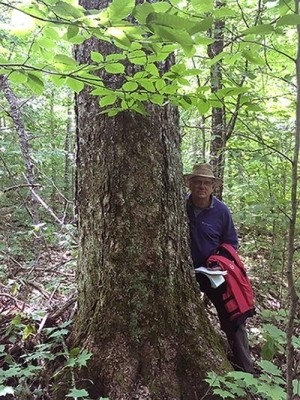Very soon, the Autumn 2018 issue of Northern Woodlands will be out. One article you’ll find in its pages is an in-depth exploration of Big Reed Forest Reserve — The Nature Conservancy’s 5,000-plus acres of virgin woods in northern Maine. Here’s a sneak peek from writer Joe Rankin, who shared a little background on his journey there.
NW: What drew you to Big Reed?
JR: It had been on my must-see list for years, but it’s hard to get to and a long way from where I live. The chance to visit the largest old-growth forest in the state did not disappoint. Visiting Big Reed was like stepping through a time portal: Big trees, big decaying trunks on the forest floor, no chainsawed stumps. “In wildness is the preservation of the world,” wrote Thoreau. The truth of that emerges from the shadow of the old trees of Big Reed. I’m planning to go back.
NW: You live in Maine, but it’s a big state. How long of a trip was it for you?
JR: It’s about five hours away for me, beginning on I-95 up to East Millinocket, where I met up with Andy Cutko and Nancy Sferra of The Nature Conservancy in Maine. We took their four-wheel-drive truck the rest of the way. It’s mostly dirt paper company roads. We headed west, then north around the western side of Baxter State Park. This area is full of dirt roads and old cuttings. We spent a lot of time on the Telos Road (a major gravel road that skirts Chamberlain Lake on the east), then looped around and got onto the Pinkham Road, another major gravel logging road, and followed that to the rough Mile Road that led off to the left to the edge of the Reserve. At this point we were in a Piscataquis County township designated T7R10 WELS. We parked the truck and started walking, very quickly crossing the reserve boundary.
NW: What do you think a visitor would find most interesting about the place?
JR: I think what most people would be impressed about is the silence. That is, unless the pilot who ferries fishermen into the Big Reed cabin is bringing someone in. He didn’t while we were there. Also, once in the Reserve, most people would probably think, at least fleetingly, “boy, you could very easily get lost in here” and “wow, it’s really hard getting around with all these huge downed trees.” And I also thought, “I’m glad I came in late summer because the biting insects would be hell in the spring!”


